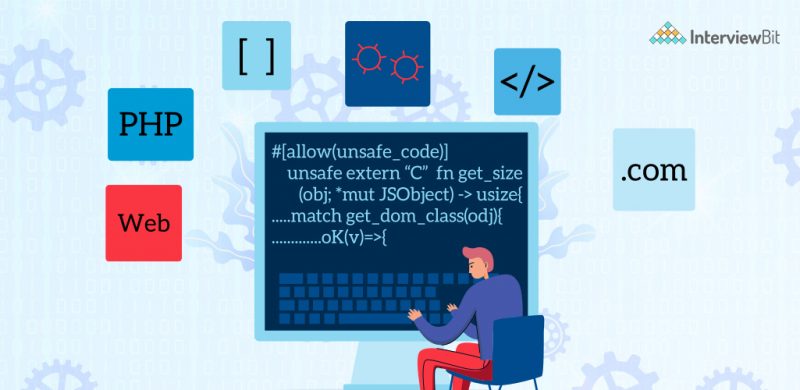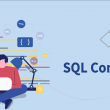You probably might be seeing many job openings by the name of Full Stack Developer these days. But what is a full-stack developer? How’s it different from a front-end developer or a back-end developer? If you are also having these types of doubts, then you are at the right place. We will be answering all your questions here!!
- What is Full Stack?
- What is a Full-Stack Developer?
- How To Become A Full-Stack Developer?
- Step 1 – Learn The Frontend Technologies
- Step 2 – Learn Languages and Technologies Used For Backend
- Step 3 – Learn Frameworks Of Your Choice
- Step 4 – Read More and Keep Practicing
- Step 5 – Make Projects
- Step 6 – Get the Job
- Full Stack Developer Salary
- 1. Salary Based On Experience
- 2. Salary Based On Location
- 3. Salary Based On The Company
- 4. Salary Based On Skills
- Full Stack Developer Skills
- What Do The Companies Look For?
- Full Stack Developer Resume
- How to prepare for Full Stack Developer Interview
- Frequently Asked Questions
- Q.1: What a Full-stack developer should know?
- Q.2: Which Full stack is Best?
- Q.3: Can I become a full-stack developer in 6 months?
- Q.4: Is Full stack development hard?
- Q.5: Is full-stack developer a good career?
- Q.6: Are full-stack developers in demand?
- Additional Resources
What is Full Stack?
Firstly, Full-stack development refers to the combination of both front-end development and backend development. Now let us first understand what the front end and the back end are!
The front end is a part that is visible to the user. The buttons, icons, pictures, tables, search bars, etc. are all part of the front end whereas the back end deals with the behind-the-scenes of the front end.
Confused about your next job?
For example, whenever you visit any shopping site, you can see the icon of the cart, which is the front end. And whenever you click, “ADD TO CART ”, for any item, the value of the number of items in your cart gets increased by one immediately, well that’s what the backend is doing.
Some logic makes that happen. A full-stack developer is a magician behind that!!
What is a Full-Stack Developer?
A full-stack developer refers to a person who is capable enough of doing both frontend development well as backend development proficiently. No doubt being a full-stack developer requires in-depth knowledge of multiple fields. One needs to have a good hand on both creative visions as well as problem-solving. You don’t need to get disheartened if you are well versed with any of these, there are many amazing resources to learn full-stack development.
And as it is rightly said, “Hard Work always pays off”, here it’s also true both logically and financially. There are multiple companies, both huge tech giants as well as small budding startups, eager to hire great full-stack developers at a handsome amount of salary.
Due to the pandemic, almost everything is going online and websites are the major means of making an online presence. Thus most companies are looking out for amazing full-stack developers who can make their site stand out among others.
How To Become A Full-Stack Developer?
A full-stack developer refers to a person who is capable enough of doing both frontend development well as backend development proficiently. No doubt being a full-stack developer requires in-depth knowledge of multiple fields. One needs to have a good hand on both creative visions as well as problem-solving. You don’t need to get disheartened if you are well versed with any of these, there are many amazing resources to learn full-stack development.
Here are a few steps that you can follow to start your journey of becoming a full-stack developer:
Step 1 – Learn The Frontend Technologies
You can start it by learning HTML and CSS which are used for frontend development. But if you have any prior knowledge of C, C++, JAVA, or Python that will be also beneficial.
After you get familiar with HTML and CSS, build some static websites like your own Bio page, etc. This will strengthen your skills and will make you strong in the front end.
Now you are ready to learn Javascript. Javascript is a very important skill in the life of a full-stack developer. Javascript is equally used in both frontend and backend. Javascript is Object-Oriented Programming means there is a concept of classes and objects. Javascript is used to provide behaviour in the website made by HTML and CSS.
For example, suppose you made a simple website by taking the first name, second name, and date of birth of the user and now you want to output the full name of a user along with their age. You can not do this using HTML and CSS. To perform such tasks you need to use JavaScript.
After this, you can add certain dynamic functionalities to your HTML CSS website using Javascript.
Step 2 – Learn Languages and Technologies Used For Backend
Get familiar learn JAVA (most popular in the industry), PYTHON, PHP, NodeJs, or any other backend language.
Additionally, you have to learn databases and DBMS (Database management system). The most popular and beginner-friendly is SQL. Though there are many latest databases available now like MongoDB SQL is good to start with. There are a few more things you should concentrate on
- Networks
- Server knowledge and architecture
- Data Structures and Algorithms
- Database Management System
Step 3 – Learn Frameworks Of Your Choice
Frameworks are software that supports the development of web applications and make the process of development easier and smarter. Various frameworks available are –
- React
- Angular
- Django
- Laravel
- Express
You do not need to know all of them, try all and pick according to your choice. Once you are fluent in the one you want, It’s a very easy task to switch between and learn as many frameworks as you want.
Step 4 – Read More and Keep Practicing
Now you know all the necessary tools and technologies. Now if you think you need a better understanding of all of these concepts then you can opt for a course on Full Stack Development or read books about it.
Step 5 – Make Projects
Start making some advanced and useful projects that make an impact on the lives of people. Also, host it on any of the platforms so that you can learn how the hosting works. You can also build your portfolio and get started with freelancing.
Step 6 – Get the Job
Now you are ready to get into an internship. Or you can start applying for a full-time role based on full-stack development.
Full Stack Developer Salary
full stack developers get a handsome amount of salary. However, the actual salary depends on many factors like company, experience, location and obviously on skills.
Experience matters a lot when we talk about salaries. The salary of a senior full-stack developer will be more than that of a fresher. The average full stack developer salary in India is ₹7,23,017 per year.
1. Salary Based On Experience
A. Full Stack Developer Fresher Salary
Entry-level is usually defined as college graduates having no prior experience of working in a corporation. The average salary ranges around ₹3,50,000 per year.d
B. Mid-Level Pay Structure
Full-stack developers with years of experience ranging between 1-4 years come under this category. The average salary ranges around ₹546,191 per year.
C. Experienced Pay Structure
Full-stack developers with years of experience ranging between 5-9 years come under this category. The average salary ranges around ₹1,375,689 per year.
2. Salary Based On Location
Banglore is known as the Silicon Valley of India and is top among the pay structures as compared to other cities.
Most of the big tech giants and start-ups have their offices in Bangalore. After Banglore, Mumbai and Hyderabad are the second and third highest-paying cities respectively. But since these cities are highly advanced, so is the expense of living in these cities. The average full-stack developer salaries in various cities are as follows –
| City | Average Salary |
|---|---|
| Bangalore | ₹8,06,041 P.A |
| Mumbai | ₹7,78,462 P.A |
| Hyderabad | ₹7,72,724 P.A |
| Gurgaon | ₹6,88,765 P.A |
| Chennai | ₹6,81,285 P.A |
3. Salary Based On The Company
As the demand for full-stack developers is increasing day by day, many more companies are starting to look out to hire more and more full-stack developers. The top recruiters in India are –
| Company | Average Pay |
|---|---|
| Tata Consulting Services | ₹4,63,993 |
| Cognizant | ₹6,00,000 |
| IBM | ₹5,07,000 |
| Infosys | ₹4,00,000 |
| Accenture | ₹6,55,496 |
| Capgemini | ₹6,06,573 |
| Wipro | ₹5,40,299 |
4. Salary Based On Skills
The most important thing for a full-stack developer is the skill set. More skills, more the pay. And, there are also certain trends in the market. As new technologies are booming in the markets day by day, therefore there is a need to learn new skills and be up to date. According to these market trends, the demand for certain skills is more than the others.
Some top demanding skills are:
1: JavaScript
2: JAVA
3: SQL
4: NodeJs
5: ReactJs
6: Python
The average salaries of these skills are:
JavaScript
The average salary for a Full Stack Software Engineer having JavaScript as a skill is ₹599,997
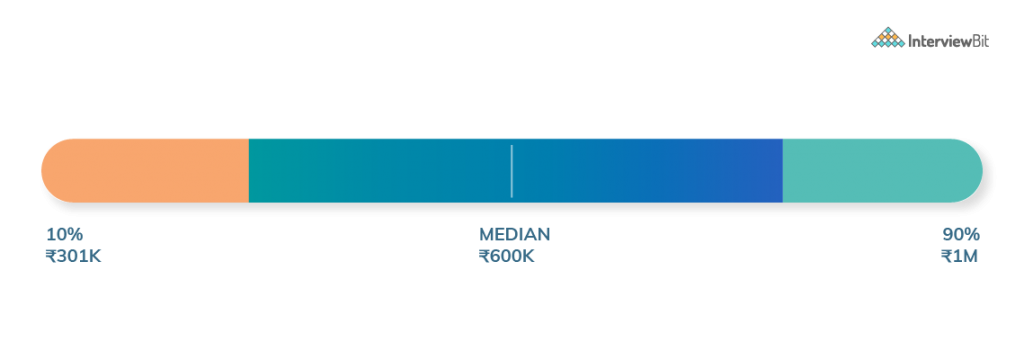
Java
The average salary for a Full Stack Software Engineer having Javascript as a skill is ₹624,000
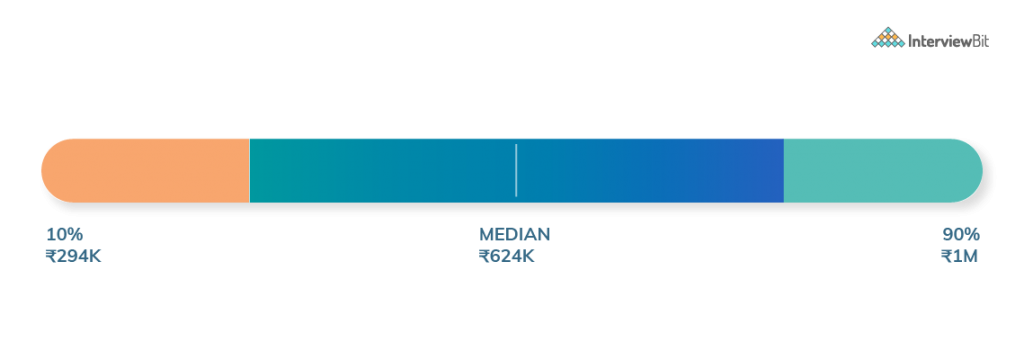
SQL
The average salary for a Full Stack Software Engineer having SQL as a skill is ₹593,218
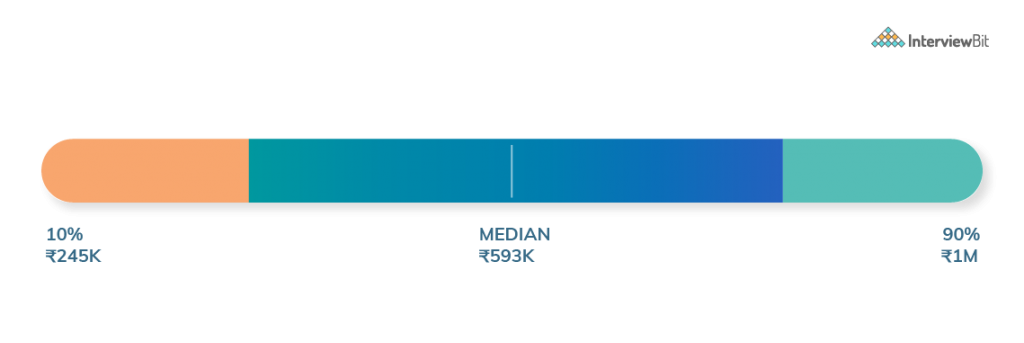
NodeJs
The average salary for a Full Stack Software Engineer having Nodejs as a skill is ₹591,715
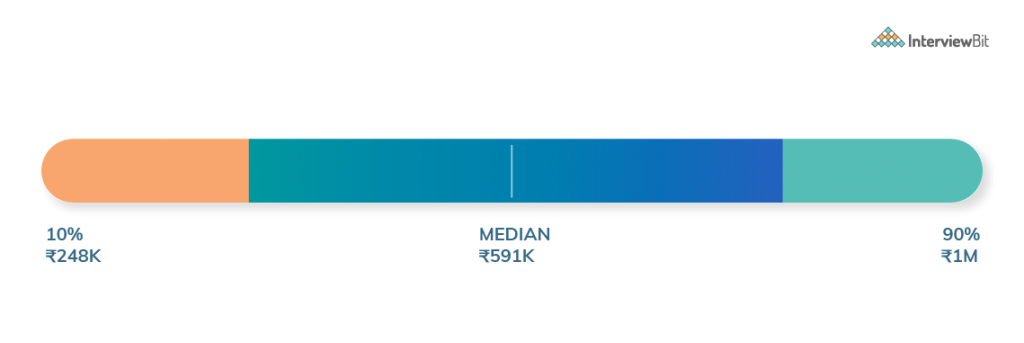
ReactJs
The average salary for a Full Stack Software Engineer having ReactJs as a skill is ₹570,000
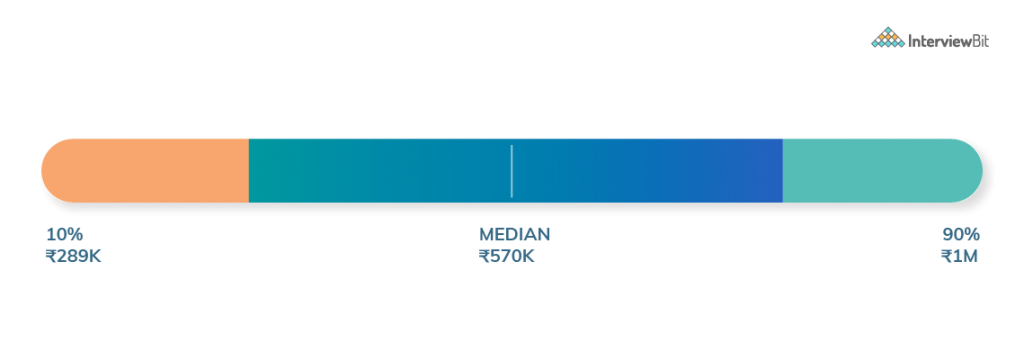
Python
The average salary for a Full Stack Software Engineer having Python as a skill is ₹377,000
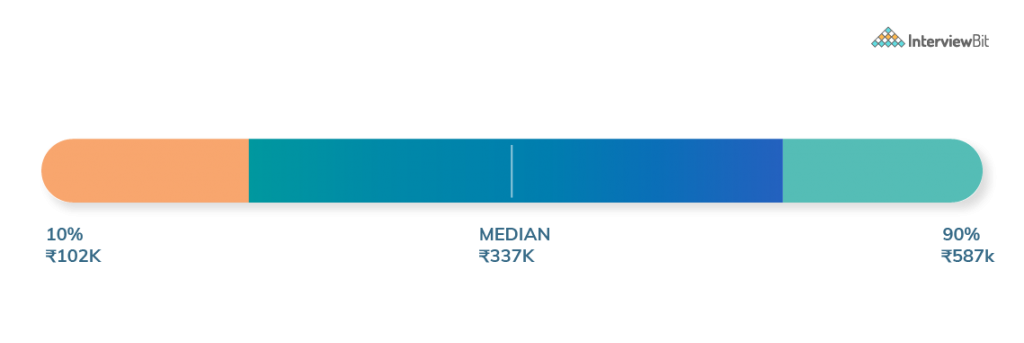
Full Stack Developer Skills
The key to success in any field is practice!!!
The same applies to full-stack development, if you want to excel in it just make more and more projects. Initially make projects on the front end and backend separately and then combine both of them and make full-stack projects. Get command in using databases. Explore new tools and frameworks but do not get overwhelmed by any of these. Just focus on one technology and master it. But be up to date with all the latest technology!!!
Full-stack developer performs the task of both frontend and backend developer. Therefore to become a full-stack developer, a knowledge of both frontend and backend technologies is mandatory.
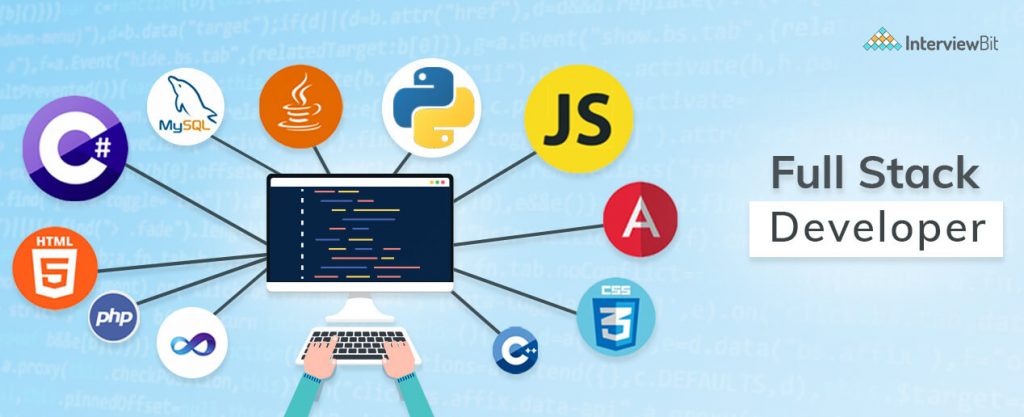
HTML and CSS –
HTML and CSS are building blocks for front-end development. You cannot even make the simplest of websites without using them. So it’s the first thing that every full-stack developer learns as he/she starts the journey of becoming a full-stack developer. Nowadays, there are many frameworks available like Bootstrap, etc, which are commonly used to get predefined HTML and CSS-made object code for buttons, forms, etc. So it is advised to get familiar with such frameworks after getting sound knowledge of HTML and CSS.
UI and UX –
UI stands for user interface and UX stands for user experience. UI deals with how the application will look like. Positions of buttons, images, videos, and text all come under the user interface. UX deals with how users will interact with the user interface. A full-stack developer should be skilled enough to make decisions regarding UI and UX. There should be a beautiful UI but not at the cost of UX.
Javascript –
Javascript is a very important skill in the life of a full-stack developer. Javascript is equally used in both frontend and backend. Javascript is Object Oriented Programming means there is a concept of classes and objects. Javascript is used to provide behaviour in the website made by HTML and CSS.
For example, suppose you made a simple website by taking the first name, second name, and date of birth of the user and now you want to output the full name of a user along with their age. You can not do this using HTML and CSS. To perform such tasks you need to use JavaScript. Nodejs is an open-source server environment that uses Javascript. It is used for a backend. Thus you can build a full-stack website by using Javascript!!.
Backend Languages and Frameworks –
There are multiple backend languages available nowadays. You can learn any of them as once you master one language, it will be very easy to switch to any of the languages because the logic behind all of these languages is somewhat the same. A few backend technologies include Java, PHP, Python, etc.
There are many more languages available that you can use for backend development. There are also many frameworks available like Django, Express.js, Flask, Laravel, etc.
Databases –
Databases are a warehouse of all the applications where all necessary data required for the proper functioning of an application is stored. Full-stack developers must be skilled in using and managing databases. And should be familiar with DBMS as full-stack developers require to fetch and feed data a lot!
Version Controls
Nowadays version controls are widely used in the field of development. It helps in saving the codebases at every instance thus whenever any error occurs in the code or something did not work out properly, you can go back to the previous state of your code very easily. Also if you are working on a large project and multiple developers are working on it, then all of them can contribute at the same time to the project using different branches. The most popular version control is Git and Github.
HTTP AND REST
HTTP stands for Hypertext Transfer Protocol, it is used for getting data from clients, and REST is used for interacting with that data. Therefore HTTP and REST are again very important data skills for full-stack development. Thus both HTTP and REST are very important when it comes to interacting with the user.
Soft Skills
Nowadays soft skills are given a lot of priority. As soft skills are hard to gain as compared to technical skills. And being a full-stack developer requires many soft skills like time management, decision-making, etc. A few important soft skills are:
- Time Management
- Decision Making
- Learning Attitude
- Problem-Solving
- Creative Vision
Read More – Skills Required For Full Stack Developer
What Do The Companies Look For?
The full-stack developer does the job of both front-end and backend developers. Full-stack developers need to know both client-side as well as server-side development. They need to be familiar with both types of tech stack, but just knowing the tech stacks are not enough. There are many key requirements that companies look into for candidates while hiring for a full-stack developer.
Full Stack Developer Job Description
A typical job description of a full-stack developer will somewhat look like this:
- Creating website architecture.
- Designing user interactions on web pages.
- Developing front end and back end of applications.
- Creating servers and databases for functionality.
- Ensuring cross-platform optimization for mobile phones.
- Ensuring responsiveness of applications.
- Working alongside graphic designers for web design features.
- Seeing through a project from conception to finished product.
- Designing and developing APIs.
- Meeting both technical and consumer needs.
- Staying abreast of developments in web applications and programming languages.
- Deploying and maintaining applications.
Though the actual job responsibility depends on the experience level of a developer. The various experience level according to jobs is:
1. Intern (Student)
Interns work under a mentor for a particular period. They usually work on a small part of a project under the guidance of a mentor. It is not expected from an intern to write production-ready code.
2. Entry Level (Fresher)
These types of full-stack developers are usually college graduates. They work in a team under a team manager. They are assigned a particular task from a project, for which they need to write code that is production-ready and has to complete that before a given deadline. Here more focus is done on the learning part.
3. Mid Level (2-5 years of experience)
These developers are expected to write production-ready code. They usually have sound knowledge of how things work and they deliver high-quality work. They also guide fellow engineers or juniors whenever necessary.
4. Senior level (5+ years of experience)
By this time most full-stack developers become managers, principal architects, senior developers, etc. Managers plan the whole project, assign work to a team of full-stack developers and ensure work is delivered in proper time and the quality of code is according to the mentioned standard. Principal architects are responsible for developing high-level product specifications with attention to system integration and feasibility. Senior developers review code work for accuracy and functionality and create a plan for implementing design plans.
Full Stack Developer Resume
If you are applying for any role, it’s obvious that your achievements, experience, and qualifications should be by the role you are applying for. If we particularly talk about full-stack developer roles, then a few things that you should mention in your resume are:
- All the frontend, backend, frameworks, databases, languages, etc. that you know should be present in the skills section. And it will be an add-on if you also mention your proficiency in that skill.
- Mention all the amazing projects that you made in the field of full-stack development. Mention your top 2-3 projects that you think are unique and that will make some impact on society.
- Mention the internships that you did as a front-end developer, back-end developer, or full-stack developer. Also mention what you did in that internship, the technologies you worked on, and how your contribution positively affected the company in which you did the internship.
- Mention all your open-source contributions, if you did any, and the hackathons in which you participated.
- If you are an experienced person then you should mention your previous company, your role, projects on which you worked, and how your contribution positively affected the company.
A few things that you should avoid mentioning in your resume are
- Do not mention skills that you don’t know. Do not lie as if the interviewer will catch you, the consequences will be very bad.
- Avoid mentioning projects such as clones etc. Even if you’re mentioning them, try to add some unique features to them. Mention the projects that have something unique in them.
How to prepare for Full Stack Developer Interview
The most important point when it comes to interviewing is your resume:
Your resume is your first impression of the interviewer. Your resume should contain all the skills that are required for the role. There should be projects or internship experiences present in your resume that highlights how you have implemented all the skills that you have mentioned. Your resume should contain all the highlights of your career including the open-source contribution, hackathons, etc.
To ace a full-stack developer interview, you need to be well-versed in all the tools and technologies mentioned in your resume. You should know all the details of the project that you mentioned. You should be able to explain every part of the project. In short, there should be no instance that can make the interviewer feel like you have not done the thing which you mentioned in the resume.
Tips to Crack Full Stack Interview
- Be fluent with the technologies that you mentioned in your resume. If you are not confident in something, you shouldn’t mention it.
- Go through the list of “MOST ASKED INTERVIEW QUESTIONS” for every skill that you mentioned.
- If you do not know the answer to any of the questions asked by the interviewer, just politely say no. Do not try to make up the answer or give wrong answers.
- If possible try to give mock interviews. Take the help of your friends or seniors working or preparing for the same interview.
- In the end, you need to know that the most important thing is your skills. Make multiple projects, start with smalls and then gradually move towards full-stack. Practice more and more, it will help you in developing your skills. If you are confident enough in your skills then nothing can stop you.
In a nutshell, a full stack developer is a person who is well versed in both frontend and backend. There are many tools and technologies that you need to learn in order to be a full-stack developer. But it’s a one-time investment, once you learn all of this stuff, there is a bright career full of opportunities waiting for you. Therefore, all the efforts that you will put in are worth it!!
Frequently Asked Questions
Q.1: What a Full-stack developer should know?
Ans: A full-stack developer refers to a person who is capable enough of doing both frontend development well as backend development proficiently. Therefore full-stack developers should know front-end languages and technologies like HTML, CSS, etc, backend technologies like Nodejs, JAVA, PHP, PYTHON, Django, Ruby on Rails, etc, and databases like SQL, MongoDB, etc, version controls such as GIT, GitHub, etc.
Q.2: Which Full stack is Best?
Ans: A few common full-stack combinations are:
- LAMP stack: JavaScript – Linux – Apache – MySQL – PHP
- LEMP stack: JavaScript – Linux – Nginx – MySQL – PHP
- MERN stack: JavaScript – MongoDB – Express – AngularJS – Node.js
- Django stack: JavaScript – Python – Django – MySQL
- Ruby on Rails: JavaScript – Ruby – SQLite – Rails
There is nothing like the best combination of full-stack. There are many factors involved like cost estimation, flexibility, scalability, security, etc. However, the most popular tech stack nowadays are MERN, MEAN, and Ruby on Rails.
Q.3: Can I become a full-stack developer in 6 months?
Ans. The time required to become a full-stack developer is dependent on the factors such as your learning speed, consistency, and the number of hours you will put in every day. However, with full dedication and consistency, it is possible to learn the full stack development in 6 months but then again you will have to put much more time to excel in it.
Q.4: Is Full stack development hard?
Ans. Everything comes with some pros and cons, and so does full-stack development. It is a very rewarding field but it’s hard too. You need to learn various languages, frameworks, tools, and technologies, and then again you will need to do a lot of practice to excel in it.
Q.5: Is full-stack developer a good career?
Ans. It is indeed a great career option. A full-stack developer is a master of all trades!! No big or small company does not demand full-stack developers. And once you become a full-stack developer there are many career options for you like frontend developer, backend developer, etc.
Q.6: Are full-stack developers in demand?
Ans. Yes, they are!! Almost all IT companies are looking out for full-stack developers and also they pay a handsome amount of salary. There are all-time openings for full-stack developers for all experience levels. Whether you are a fresher or an experienced developer you will be in great demand!!







 Join WhatsApp Group
Join WhatsApp Group
